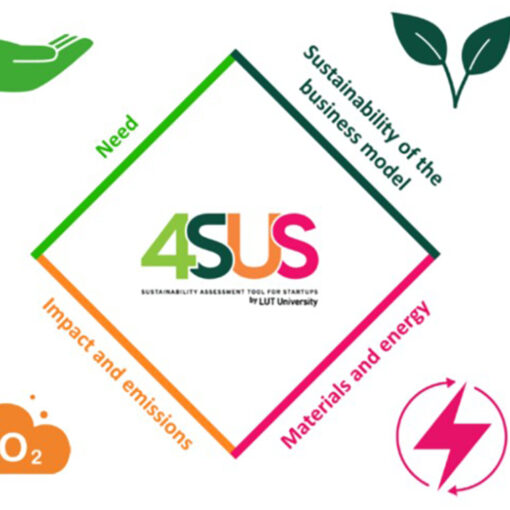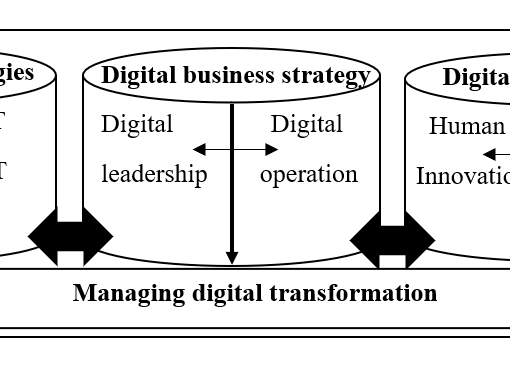Leading your thoughts is an important skill for an entrepreneur. Or to be honest – anyone. Improved self-efficacy gives you greater motivation, more autonomy and courage to take risks.
Why is it that we so often fail to set ourselves attainable goals or to achieve the goals that we have set? Why aren’t we doing the things we know we should be doing? Quite probably it is our mind playing tricks on us.
Self-leadership can be defined as a “process of influencing oneself to establish the self-direction and self-motivation needed to perform” (Manz 1983, Neck & Manz 1996). Taking action is what entrepreneurs do every single day. But where it all actually starts from is this: how well you can lead your mind.
Achieving your goals requires self-efficacy, which means that an individual believes in his or her capacity to take actions towards their goals(Bandura 2000). So it is all about perception and how you see yourself. To strengthen self-efficacy, one needs cognitive strategies.
![[Alt text: infograf with texts. Awareness of thought patterns and beliefs consists of: non-judgmental self-dialog, less mind chatter, visualisations and break negative beliefs.]](https://blogit.lab.fi/labfocus/wp-content/uploads/sites/8/2023/03/150_2023_Lead-your-thoughts-entrepreneur-1024x486.png)
According to Neck & Manz, cognitive strategies are: self-influence trough self-dialogue, mental imagery and affecting beliefs and thought patterns. They talk about thought self-leadership which involves leading your mind by replacing unproductive thoughts with productive ones. (Neck & Manz 1996.)
Cognitive strategies to find more self-efficacy
No problem can be solved unless you see the problem first. Thus, the first step is becoming aware of the negative beliefs or thought patterns that are hindering you. Then comes the part when you can use cognitive methods to change the inner landscape.
Mindfulness or meditations may help to deal with the mind chatter by noticing that you are not your thoughts. Monitoring the inner talk and putting it into perspective helps you to improve the quality of inner dialog. (Kross 2021). With visualisations you may be able to change how you perceive events of past, present or future. Reframing your own statements about yourself may give systematic help to question negative beliefs and transform them into better ones. (Hoobyar 2013).
What will you gain?
Using these methods in a systematic way, will change you. Your brain learns new ways and new kind of thought patterns start to form. You end up having better beliefs about yourself and your surroundings. The improved sense of self-efficacy gives you greater motivation, more autonomy, proactiveness and courage to take risks.
What is the thought you want to change right now? Write it down, trash it and create a better one! Want to learn more about yourself and the tools to lead your thoughts? The course The Art of Leading Yourself will be available again in the spring 2024.
Kaisa Liukko is Senior Lecturer at LAB University of Applied Sciences. She teaches The Art of Leading Yourself and The Art of Being Present -courses and works in SLEM project (LAB 2023).

References
Bandura, A. 2000. Self-efficacy : the exercise of control. New York : Freeman.
Hoobyar, T., Dotz T. & Sanders, S. 2012. NLP: The essential guide to neuro-linguistic programming. Creating the person you want to be. New York: HarperCollins Publishers.
Kross E. 2021. Chatter, The Voice in Our Head and How to Harness It. UK: Random House.
LAB. 2023. SLEM – Entrepreneurial self-leadership education through virtual training. Project. Cited 15 Mar 2023. Available at https://lab.fi/fi/projekti/slem-entrepreneurial-self-leadership-education-through-virtual-training
Manz, C. C. 1983. Improving performance through self-leadership Global Business and organizational excellence Volume2, Issue3. 288‒297.
Manz, C. C. & Neck, C. P. 2004. Mastering Self-Leadership: Empowering Yourself for Personal Excellence. 3rd Edition. Upper Saddle River: Pearson Prentice Hall.
Neck, C.P. & Manz, C.C. 1996. Thought self-leadership: the impact of mental strategies training on employee cognition, behavior, and affect. Journal of organizational behavior, Vol.17 (5). 445‒467.




